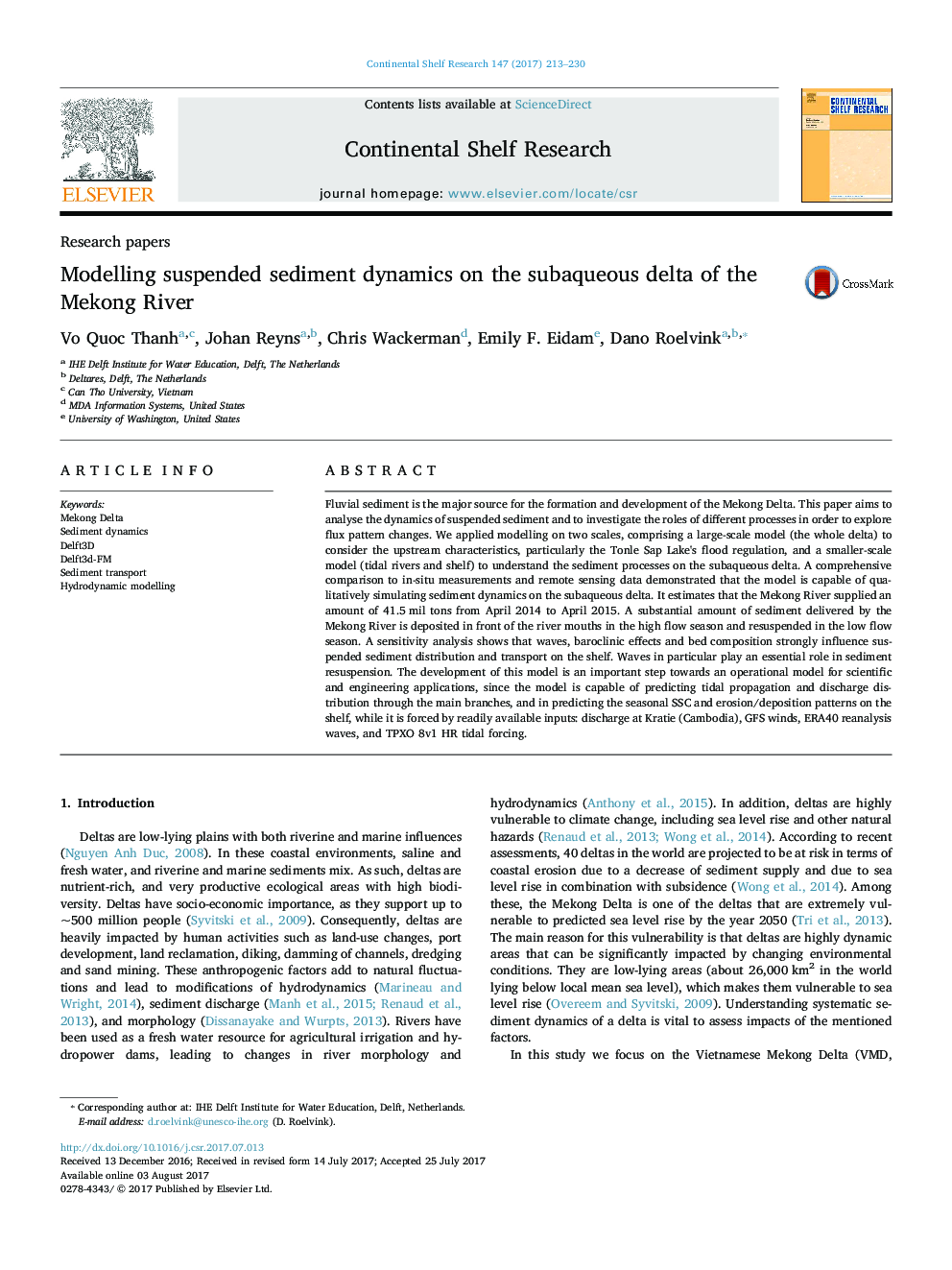| کد مقاله | کد نشریه | سال انتشار | مقاله انگلیسی | نسخه تمام متن |
|---|---|---|---|---|
| 5764376 | 1626066 | 2017 | 18 صفحه PDF | دانلود رایگان |

- We applied process-based models for simulating present-day sediment transport processes in the Mekong delta.
- The approach combines modelling of seasonal and interannual variation of fluxes with more detailed 3D modelling of the estuarine and shelf processes.
- The model snapshots of the sediment plumes agree well with satellite-derived SSC fields, as do simulated and observed monthly averaged SSC patterns.
- Seasonal sediment changes are strongly modulated by river discharges and monsoons.
- The nearshore SSC is considerably reduced in absence of wave-induced stirring.
Fluvial sediment is the major source for the formation and development of the Mekong Delta. This paper aims to analyse the dynamics of suspended sediment and to investigate the roles of different processes in order to explore flux pattern changes. We applied modelling on two scales, comprising a large-scale model (the whole delta) to consider the upstream characteristics, particularly the Tonle Sap Lake's flood regulation, and a smaller-scale model (tidal rivers and shelf) to understand the sediment processes on the subaqueous delta. A comprehensive comparison to in-situ measurements and remote sensing data demonstrated that the model is capable of qualitatively simulating sediment dynamics on the subaqueous delta. It estimates that the Mekong River supplied an amount of 41.5Â mil tons from April 2014 to April 2015. A substantial amount of sediment delivered by the Mekong River is deposited in front of the river mouths in the high flow season and resuspended in the low flow season. A sensitivity analysis shows that waves, baroclinic effects and bed composition strongly influence suspended sediment distribution and transport on the shelf. Waves in particular play an essential role in sediment resuspension. The development of this model is an important step towards an operational model for scientific and engineering applications, since the model is capable of predicting tidal propagation and discharge distribution through the main branches, and in predicting the seasonal SSC and erosion/deposition patterns on the shelf, while it is forced by readily available inputs: discharge at Kratie (Cambodia), GFS winds, ERA40 reanalysis waves, and TPXO 8v1 HR tidal forcing.
Journal: Continental Shelf Research - Volume 147, 1 September 2017, Pages 213-230